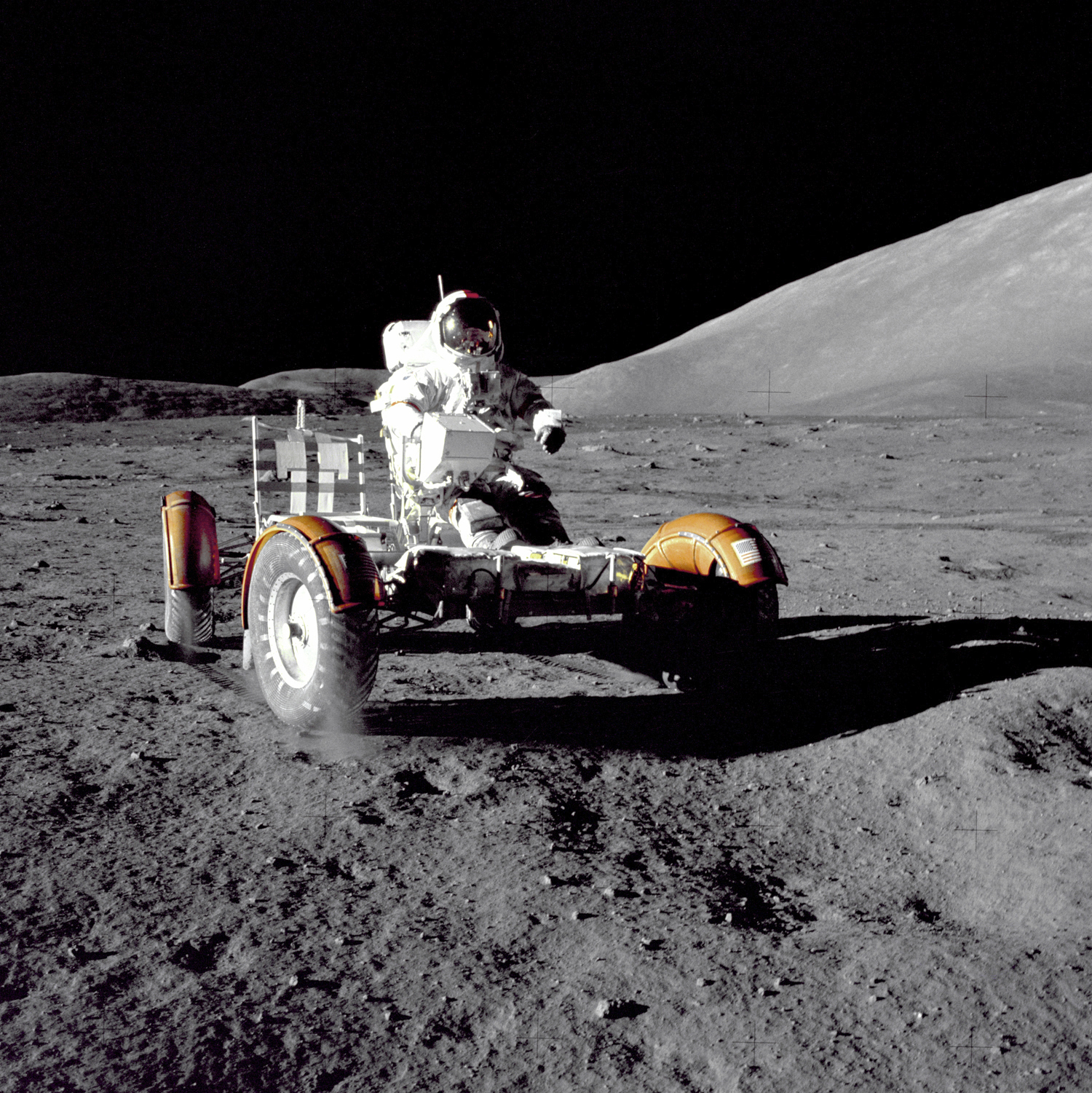Astronaut Gene Cernan Didn't Just Go to the Moon, He Took Us All With Him
Cernan had unique ability to convey the excitement of going into space.
— -- Lynn Sherr, a former ABC News correspondent, covered the space program in the 1980s. Sherr anchored ABC News special coverage of shuttle launches, landings and space walks, including the explosion of the Space Shuttle Challenger in 1986.
One bright moonlit night in Florida, as we headed back to the ABC News workspace at the Kennedy Space Canter, astronaut Gene Cernan turned to me and pointed up to the big yellow ball in the sky.
"You see that spot just by the 'eye?'" he asked me, referring to the unmistakable face of the Man in the Moon. "You see that? That's where I landed. That's the Valley of Taurus-Littrow."
The grin on his own face was boundless; the pride, palpable. The last human to leave his footprints on the lunar surface knew he'd had the experience of a lifetime.
How lucky we were as a nation, and as a space-going species, to have Gene Cernan, who died Monday at the age of 82, as one of us. His enthusiasm for space travel and his ability to convey its wonders were marvels. And he did it with the precision of an engineer and the artistry of a poet.

I was especially lucky. When in 1981 I was asked to join our very smart and experienced team to cover the upcoming NASA space shuttle program, I joined the best: anchor Frank Reynolds, correspondent Jules Bergman, and a team of people under executive producer Bob Siegenthaler (who had also engaged moonwalker Cernan as our outside expert) who knew far more than I did about the U.S. rocket program.
In time, through a series of circumstances, I became ABC's lead space anchor and correspondent, and always sitting beside me on the booth was the indefatigable astronaut. Cernan's unabashed cheerleading for the success of the shuttle ("Go, baby, go!" he memorably said into his microphone as the Columbia first lifted off) was a perfectly acceptable contrast to our own journalistic neutrality. And made for some warm moments of humanity on the air.
In 1983, during the 2 a.m. launch of STS-8 -– NASA's first attempt to send up a shuttle without benefit of daylight -– Cernan turned to me after liftoff and said, fairly bubbling, "Do you believe me now, Lynn?" He was talking about his own last launch on Apollo 17, more than a decade earlier, a nighttime display that he'd witnessed from inside of the spacecraft, and about which he was endlessly exuberant. I told him I got it.
I learned a lot from Cernan, some of it not exactly technical.
He told me about the old "Right Stuff" days, when the swaggering guys in the silver suits would drive into the Space Center just flashing a pack of cigarettes, palmed in their hands, rather than credentials. And he taught me that some of that macho tradition persisted.
During one launch, as I contemplated the potentially dodgy fate of the humans on board the world's most complicated flying machine, I uttered the word, "fear."
Cernan, with only a bit of humor in his voice, corrected me, saying, "Astronauts are never frightened, Lynn. A little apprehensive at times, but never frightened."
But even The Astronaut, as we lovingly called him, was a bit overwhelmed by the landing of the third Space Shuttle, diverted to New Mexico's exotic White Sands Missile Range by heavy rains in California. On March 29, 1982, the day of the scheduled touchdown, a fierce sandstorm whipped the talcum-powder-like gypsum sands into a frenzy, a howling, blinding mess that required Cernan and me to wear goggles on the air to relay the news. We made television history that day in our protective gear, reporting the postponement of the landing in a special report with my hair flying in the 55-mph wind and Cernan's tie floating horizontally.
New York so enjoyed our disheveled, real-life look in the blustery desert, they came back to us for a second report a few minutes later.
"Leave the goggles on," Siegenthaler commanded.
When you traveled with Cernan, you traveled in great company. Once, on the eve of a liftoff, my husband joined me in Florida, and Cernan invited us to a little pre-launch party. As we walked into the room and saw five or six of his Apollo colleagues, Larry turned to me and whispered, "We're the only ones in this room who haven't walked on the moon!"
Or, as Cernan himself put it, he flew during "the golden age of space." Much later, he'd lament what he saw as the lack of direction of the space agency, the lack of leadership from the top, the lack of commitment from Congress. But he said, and believed, that humans will return to the moon because "curiosity is the essence of human existence."
And, in his case, the joy of exploration.
On another night in Florida, or maybe it was Houston, a group of us were talking, and I asked everyone to stop and say what their favorite place was to be -– a real place or a fantasy place. Where did they go when their minds were idling in neutral? Cernan answered me instantly.
"Driving the LEM on the surface of the moon," he said, recalling his hours traversing the rocky moonscape in the open-roof, Jeep-like vehicle. You could hear him singing from Earth.
Drive on, Gene Cernan. And rest in space. You took all of us there with you, and we are more than grateful.




